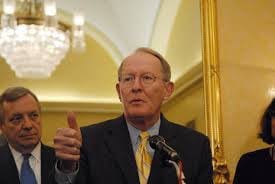
The Senate on Thursday at last united to pass a fiscal 2017 spending bill with $31 billion for the Department of Energy, but the House cannot even begin floor votes its own backlog of spending bills until Monday because Congress still has not agreed on overall spending levels for the next budget year.
It took the Senate more than two weeks to end debate on its $37.5-billion Energy and Water Appropriations Bill and actually vote on the measure. The largely bipartisan spending proposal was nearly derailed by a controversial amendment, stripped from the bill Wednesday, that would have forbidden DOE from buying heavy water from Iran. Heavy water can be used to make plutonium.
The Senate voted 90-8 in favor of the bill.
The E&W funding bill would provide $632 million for fossil energy research and development at the Department of Energy, $32 million more than sought by the administration. That would include $377 million for DOE Office of Fossil Energy carbon capture and storage and advanced power systems programs. Within that amount is $101 million for carbon capture, $8.2 million under the DOE request, and $106 million for carbon storage, $15.1 million above the administration proposal.
The Senate has also rejected a DOE plan to eliminate the separation of natural gas and coal in the fossil fuel budget structure.
The Senate’s bill is technically an amendment to the House’s 2017 Energy and Water Appropriations Bill, which still awaits a floor vote in the lower chamber. By law, the House cannot bring annual spending bills to the floor until May 15, unless Congress first reaches an accord on overall spending levels in the form of a concurrent budget resolution.
Lawmakers have not passed that resolution this year, because the House, where all budget proposals must originate, has not written one. That leaves an air of uncertainty about the annual appropriations process, which seldom goes smoothly even in years in which the White House is not up for grabs.
A spokesperson for House Majority Leader Kevin McCarthy (R-Calif.) said Thursday a budget resolution could appear on the floor as soon as Monday, and that no appropriations bills have been scheduled for floor votes.
The 2016 U.S. budget year ends Sept. 30. If Congress and the White House cannot agree on fiscal 2017 appropriations before then, lawmakers will have to put together a stopgap spending measure known as a continuing resolution that would freeze federal budgets at 2016 levels and prohibit agencies from starting any new programs until Congress approves a permanent 2017 budget.
If Congress can agree on a budget resolution and avoid further ideological divides during budget debates, the House and Senate can turn their attention to ironing out the relatively minor differences in their proposed DOE budgets for 2017.
GHG Daily Monitor reporter Abby Harvey contributed to this article.